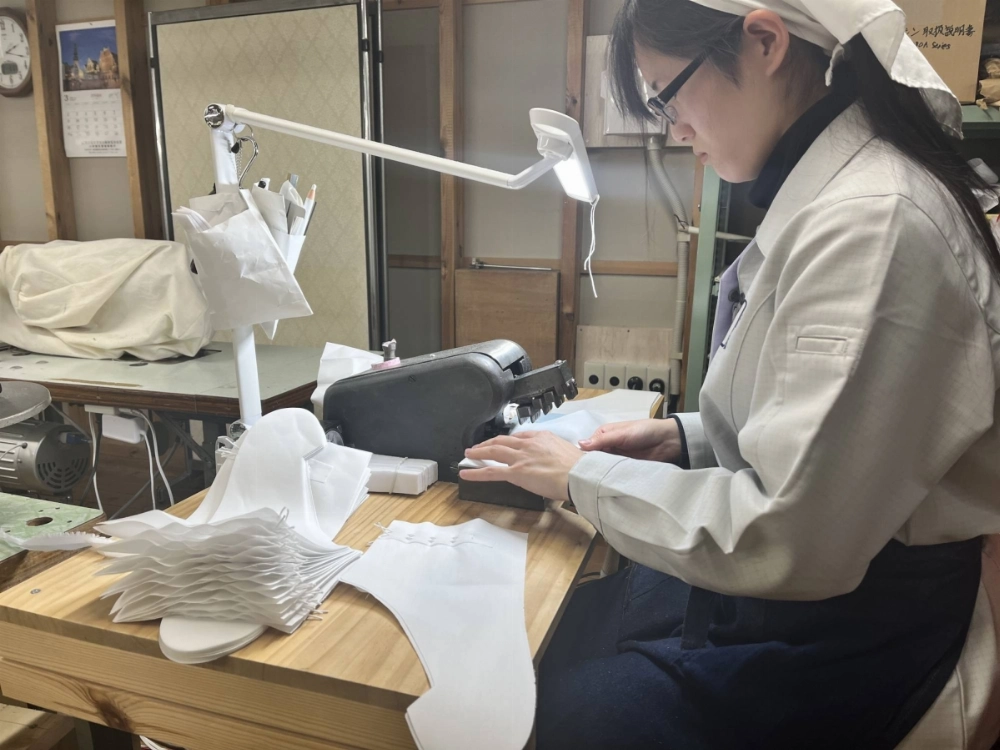On a quiet side street in Gyoda, Saitama Prefecture, a workshop rattles with the mechanical rhythm of old sewing machines.
Inside, beams of afternoon light catch motes of dust, illuminating piles of uncut fabric. Rows of metal molds rest like oversized cookie cutters, while gleaming kohaze (clasps) spill out of open boxes. Foot pedals pump, gears whir and skilled craftspeople shape tabi, Japan’s traditional split-toe socks.
Since the 1700s, Gyoda has been a base of tabi production, and by the 1930s, the town about 90 minutes north of Tokyo boasted over 200 tabi workshops and up to 500 ancillary businesses such as tabi packaging and printing. At Gyoda’s peak, its artisans churned out more than 84 million split-toe pairs each year.

















With your current subscription plan you can comment on stories. However, before writing your first comment, please create a display name in the Profile section of your subscriber account page.